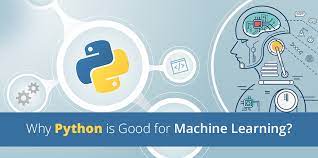The newest craze in computing is machine learning. There has been a 34 percent increase in machine learning patents since 2013, according to Forbes, and this trend is expected to continue. And Python is the programming language of choice for many Machine Learning researchers and developers. So much so that, according to Github, Python is the most used programming language for machine learning. Python’s popularity is undeniable, however, this article concentrates on the critical subject of “Why is Python the Best-Suited Programming Language for Machine Learning”?
Want to build a great career in Python and explore high-paying job opportunities at top companies in India and globally? Enroll in India’s best python course online with a certificate and guaranteed job assistance. In this course, you will learn Python online with regular live classes by industry experts.
Why python is better for machine learning
For what reasons does Python excel at machine learning?
Currently, Python is the most widely used programming language for machine learning research and development. However, you don’t have to believe me! While other ML languages such as R, Java, Scala, Julia, etc. are still in the back of the pack, Google Trends shows that Python has reached a new all-time high for machine learning interest.
While Python is the most preferred programming language for Machine Learning, the question of WHY persists. So, now that we know why Python is so popular, we can see why it is best suited for machine learning. Several of the causes for this may be found here, among them:
1. Python is Easy To Use
People dislike overly complicated things, and Python’s simplicity is one of the primary reasons for this. It appeals to both seasoned programmers and curious undergraduates because of its straightforward syntax and ease of use. Because of Python’s simplicity, programmers don’t have to spend as much time (or energy!) on the language’s technical details as they might otherwise.
Python is not just powerful, but also extremely efficient. It reduces the amount of code needed to accomplish the same amount of work. Machine Learning models can be built using Python because it is easy for humans to grasp the code. What’s not to love about all these advantages?
2. Python has multiple Libraries and Frameworks
Hundreds of libraries and frameworks are available to Python developers because the language is already well-known. The fact that these frameworks and libraries can save so much time only serves to increase the popularity of Python.
Artificial Intelligence and Machine Learning can benefit from a number of Python libraries. Here are a few examples:
Keras is a free and open-source package designed for deep learning research.
For many machine learning applications, such as neural networks, TensorFlow is a freely available software library. A lot of people seem to like these!
Classification, regression, and clustering methods are all included in the Scikit-learn machine learning library. NumPy and SciPy can both be used in conjunction with Scikit-learn.
3. Support from the Python Community and Businesses
There’s been plenty of time for the Python community to grow since its inception in 1990. As a result of this assistance, Python students can easily develop their knowledge of Machine Learning, which only adds to the increased popularity of Python. Not only that, but it gets better! Python ML lessons can be found all over the internet, from GeeksforGeeks to YouTube, and they may be a huge assistance for beginners.
Python for ML’s success relies heavily on corporate support. Google, Facebook, Instagram, Netflix, and Quora are just a few of the well-known organizations that have implemented Python into their software. In fact, many of the Python libraries for machine learning, such as Keras, TensorFlow, etc., were created solely by Google.
4. Python is Portable and Extensible
Python’s popularity in Machine Learning is largely due to this. Python’s portability and extensibility make it an ideal platform for many cross-language operations. Python’s portability makes it ideal for data scientists who like to train their machine learning models on their own computers utilizing GPUs.
Additionally, Python is supported on a wide range of platforms, including Windows, Macintosh, Linux, Solaris, and more. Furthermore, Python’s versatile nature allows for integration with other programming languages and libraries, including Java,.NET, and C/C++.
Also Read: What Is Python Used For? A Beginner’s Guide
Happy Learning!


Hey, great read! I particularly enjoyed your in-depth discussion of Python’s portability, since it was something I hadn’t really thought of before. Being a fellow tech blogger myself, I also really appreciate how organized and well-formatted everything was – it definitely made the content much more digestible overall. Keep up the awesome work!
LikeLike